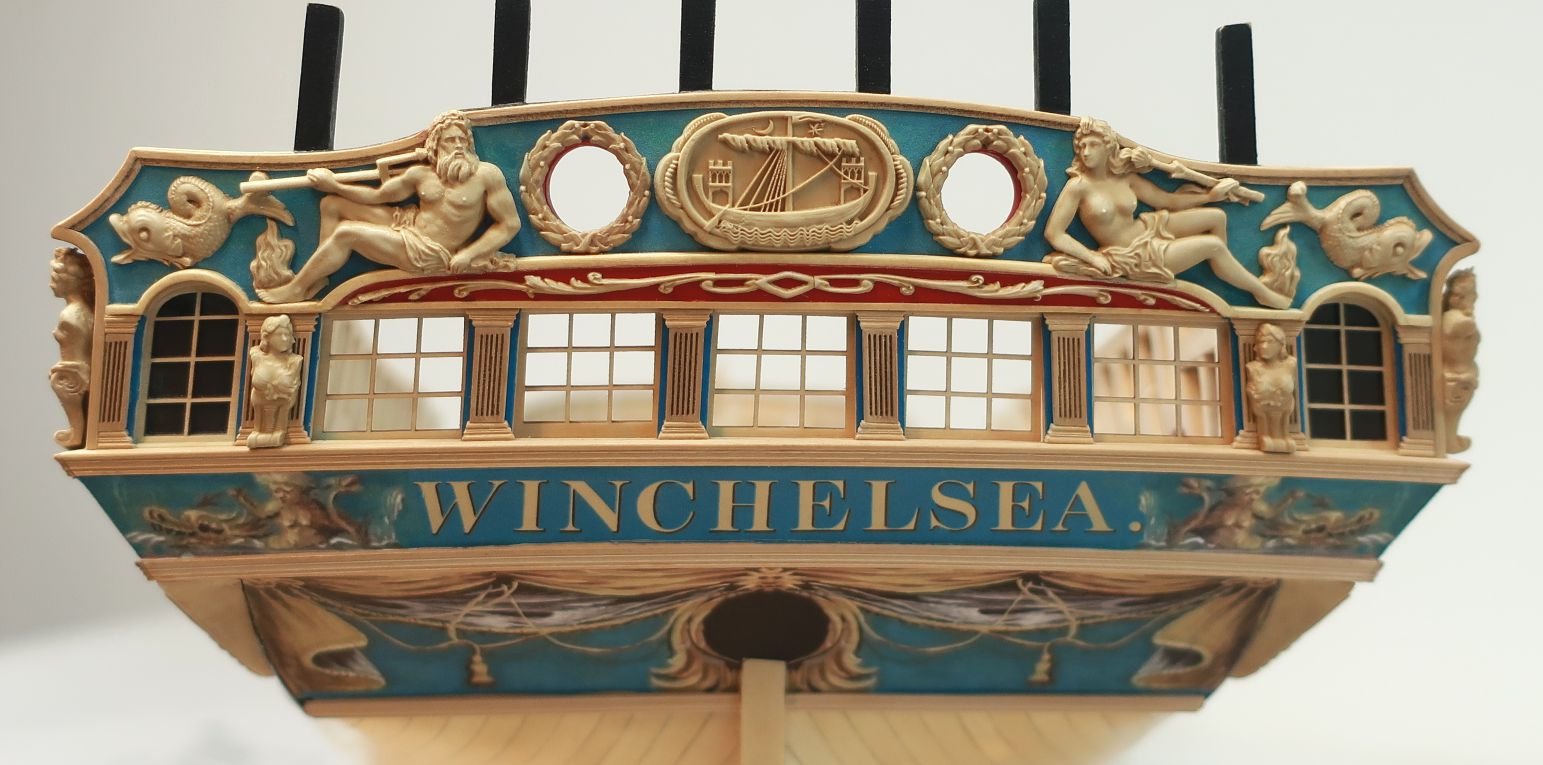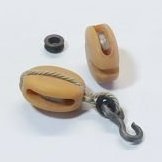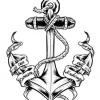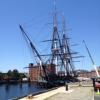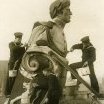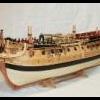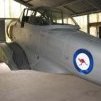Supplies of the Ship Modeler's Handbook are running out. Get your copy NOW before they are gone! Click on photo to order.
×
-
Posts
9,447 -
Joined
-
Last visited
Reputation Activity
-
 Chuck got a reaction from Obormotov in Chuck's planking videos...
Chuck got a reaction from Obormotov in Chuck's planking videos...
Its simple really....you determine the max width for a plank by choosing the scale widths that were actually used on that vessel. Its not a random choice. Should you end up with an odd number of planks after doing so, then just make one belt with one less strake in it. They need not be all the same. But depending on the size of the ship and country of origin....choose the correct width accordingly. It could be eight inches....it could be 10 or 12". It depends on the ship. The period etc. It doesnt have to be equally divided.
-
 Chuck got a reaction from Obormotov in Chuck's planking videos...
Chuck got a reaction from Obormotov in Chuck's planking videos...
I think this article may explain lining off the hull and finding the curved shape better. It is more descriptive. The version on the NRG site is the power-point from this longer article which is the chapter for the Winchelsea book. Seeing as its taking so long to complete that project I will release the longer version on planking below the wales here. Its seems like the right place/time to do it. In this case however I didnt write about pre-bending edgewise.....I was cutting the spiled edge from a sheet. It really doesnt matter how you achieve the edge-wise bend...either pre cutting from a sheet or bending as shown in the video. Its just important that you do.
Then bend it the other way with heat and also give any needed twist to the plank so its completely shaped before gluing it on the hull. That is the secret to a well-planked hull.
winplankingbelowwales.pdf
-
 Chuck got a reaction from Obormotov in Chuck's planking videos...
Chuck got a reaction from Obormotov in Chuck's planking videos...
No not exactly. The plank is first bent edgewise as shown and then bent the other way as needed. The one plank on the video if I remember correctly was lower on the hull and didnt require any bending the other way. It was so slight that I didnt need to. But in almost all cases the plank is pre shaped so that it immediately sits against the bulkhead edges. Thats why you dont have to clamp them. The CA dries so quick that its an immediate bond. Its only when folks dont pre-shape that some sort of clamp is required.
I glue two bulkheads at a time and work my way across the hull in scale lengths. Yes there is sanding butnot that much. If the planks fit well than not much sanding is required.
Just like this plank below.....the plank is always bent edge-wise first and then the other way so its completely pre-shaped to fit so no extra bending is needed. In this case below I pre-spiled the plank with a laser cutter edge-wise, but if I was using a plain strip like in the video....it would have been bent to look just like this before gluing.
Here is some more detail
Here is a straight plank as if I were going to place it on the hull. It could be at the bow or at the stern. Most beginners would try to force this into place and the top edge of the plank would lift off the hull and not sit flush against the bulkheads. Some fight with it using pins and clamps and it gets messy. Holding it without bending like shown reveals the gap . Note the widest point of that gap.
Mark this location as the center of the gradual curve you will need.
In the next picture, after bending, you can see how nice it fits and how it is flush against the bulkheads. No forcing needed. Its a perfect fit. Note the dot I marked on the plank for the apex of the curve or the widest part of the gap..You could use the compass method or the tape method to find the exact curve, but I prefer to eyeball it like this. Visually its easy to see the curve after a little practice. I always over bend slightly.
Now all I have to do is bevel the edge that meets the plank already on the hull for a tight fit (just knock off the edge as in the video) and darken the seem as I did in the video with pencil and glue it on. You can see that in this rare instance not much bending other than edge-bending was needed because it was low on the hull.
-
 Chuck got a reaction from Obormotov in Chuck's planking videos...
Chuck got a reaction from Obormotov in Chuck's planking videos...
Yes just a few drops....on each bulkhead. Applied with a toothpick. Only in rare circumstances will I glue the edges of the planks. I havent found the need to do that. I only use CA for the planking by-the-way. Once the planking is over I switch to tite-bond. I just hate waiting for the planks to set with it so I use CA instead. I havent had an issue at all.
-
 Chuck got a reaction from Obormotov in Chuck's planking videos...
Chuck got a reaction from Obormotov in Chuck's planking videos...
Yes....by lining off the hull. In general you will be able to see if your planks are measured so they taper too much against the stem. If so move the garboard back at the bow to give you more room to make the planks at the bow wider. For me it is just trial and error but after many hulls you get a good idea of where it should be. But there is always re-tweeking and lining off the hull more than once at the bow to get it looking just right before you make any sawdust with your planks.
-
 Chuck got a reaction from Pierretessier in Chuck's planking videos...
Chuck got a reaction from Pierretessier in Chuck's planking videos...
I advocate no water. You really dont need it. For the kinds of bends we are talking about, the heat does the trick. There will be some spring-back......but just overbend to begin with. The key is to line-off the hull first. Its easier when you have a plan.
That is described here.
http://modelshipworldforum.com/resources/Framing_and_Planking/Lining%20Off%20your%20hull%20for%20planking.pdf
And another by David Antscherl here....... where he cuts the planks to shape rather than bend it in that third plane.
http://modelshipworldforum.com/resources/Framing_and_Planking/Planking%20primer.pdf
But lining off the hull is half the battle. Then realizing the planks are bent and not straight to fit the hull properly in that edge-wise plane. Whatever way you eventually get it there. But force bending a straight plank is a really frustrating way to fight through planking. IMHO
-
 Chuck got a reaction from Jaxboat in Chuck's planking videos...
Chuck got a reaction from Jaxboat in Chuck's planking videos...
I think this article may explain lining off the hull and finding the curved shape better. It is more descriptive. The version on the NRG site is the power-point from this longer article which is the chapter for the Winchelsea book. Seeing as its taking so long to complete that project I will release the longer version on planking below the wales here. Its seems like the right place/time to do it. In this case however I didnt write about pre-bending edgewise.....I was cutting the spiled edge from a sheet. It really doesnt matter how you achieve the edge-wise bend...either pre cutting from a sheet or bending as shown in the video. Its just important that you do.
Then bend it the other way with heat and also give any needed twist to the plank so its completely shaped before gluing it on the hull. That is the secret to a well-planked hull.
winplankingbelowwales.pdf
-
 Chuck got a reaction from Jaxboat in Chuck's planking videos...
Chuck got a reaction from Jaxboat in Chuck's planking videos...
Yes....by lining off the hull. In general you will be able to see if your planks are measured so they taper too much against the stem. If so move the garboard back at the bow to give you more room to make the planks at the bow wider. For me it is just trial and error but after many hulls you get a good idea of where it should be. But there is always re-tweeking and lining off the hull more than once at the bow to get it looking just right before you make any sawdust with your planks.
-
 Chuck got a reaction from Cannon Fodder in Chuck's planking videos...
Chuck got a reaction from Cannon Fodder in Chuck's planking videos...
I advocate no water. You really dont need it. For the kinds of bends we are talking about, the heat does the trick. There will be some spring-back......but just overbend to begin with. The key is to line-off the hull first. Its easier when you have a plan.
That is described here.
http://modelshipworldforum.com/resources/Framing_and_Planking/Lining%20Off%20your%20hull%20for%20planking.pdf
And another by David Antscherl here....... where he cuts the planks to shape rather than bend it in that third plane.
http://modelshipworldforum.com/resources/Framing_and_Planking/Planking%20primer.pdf
But lining off the hull is half the battle. Then realizing the planks are bent and not straight to fit the hull properly in that edge-wise plane. Whatever way you eventually get it there. But force bending a straight plank is a really frustrating way to fight through planking. IMHO
-
 Chuck got a reaction from FrankWouts in HM Cutter Cheerful 1806 by Chuck - FINISHED - 1:48 scale - kit prototype
Chuck got a reaction from FrankWouts in HM Cutter Cheerful 1806 by Chuck - FINISHED - 1:48 scale - kit prototype
Today I finished the standing rigging.
Once the ratlines were done I only had to rig the topmast shrouds and the topmast stay.
Even though I have shown the topmast backstay on the plans, I did not rig them. I just wanted to show what they would look like. Only under rare conditions were they used. I have never seen a contemporary model with them rigged and the straps on the side of the hull are always left empty. So I decided to follow suit. I think it ruins the look of the model a bit as well and this is more in keeping with what everyone is used to seeing.
Next up I will start the running rigging. Its getting close!!!!
-
 Chuck got a reaction from DORIS in HM Cutter Cheerful 1806 by Stuntflyer (Mike) - FINISHED - 1:48 scale
Chuck got a reaction from DORIS in HM Cutter Cheerful 1806 by Stuntflyer (Mike) - FINISHED - 1:48 scale
The main stay isnt situated on top of the shroud gang....just slide it over and around the back of the shroud gang...This is actually more stable and typical. Take a look at this contemporary model... although it is not a cutter, it is still typical of how the stay appears around the shroud gang rather than stacked "next in line" on top very neat. If that makes sense. It need not be stacked. Although mine did seem to fall that way naturally.
-
 Chuck got a reaction from JerseyCity Frankie in HM Cutter Cheerful 1806 by Stuntflyer (Mike) - FINISHED - 1:48 scale
Chuck got a reaction from JerseyCity Frankie in HM Cutter Cheerful 1806 by Stuntflyer (Mike) - FINISHED - 1:48 scale
Looks very good Mike. I wouldnt move it like the book. Think about what would happen over time if on the actual ship it was there. Small movement in the mast would cause that rope to shimmy back and forth and move around. The top edge of that strap although not razor sharp would slowly act as a knife weakening and tearing/cutting through the stay over time as the mast moved ever- so slowly back and forth.....
Can you picture that?
Chuck
-
 Chuck got a reaction from Jorge Diaz O in Carving tools, books and carving woods discussion
Chuck got a reaction from Jorge Diaz O in Carving tools, books and carving woods discussion
These two pieces were done with just #11 blades. No finish applied on the top one yet. They are about 1/4" wide and just a few inches long.....only 1/32" thick. I think a large chisel would obliterate them.
-
 Chuck got a reaction from Mirabell61 in HM Cutter Cheerful 1806 by Stuntflyer (Mike) - FINISHED - 1:48 scale
Chuck got a reaction from Mirabell61 in HM Cutter Cheerful 1806 by Stuntflyer (Mike) - FINISHED - 1:48 scale
The main stay isnt situated on top of the shroud gang....just slide it over and around the back of the shroud gang...This is actually more stable and typical. Take a look at this contemporary model... although it is not a cutter, it is still typical of how the stay appears around the shroud gang rather than stacked "next in line" on top very neat. If that makes sense. It need not be stacked. Although mine did seem to fall that way naturally.
-
 Chuck got a reaction from Ryland Craze in HM Cutter Cheerful 1806 by Stuntflyer (Mike) - FINISHED - 1:48 scale
Chuck got a reaction from Ryland Craze in HM Cutter Cheerful 1806 by Stuntflyer (Mike) - FINISHED - 1:48 scale
Looks very good Mike. I wouldnt move it like the book. Think about what would happen over time if on the actual ship it was there. Small movement in the mast would cause that rope to shimmy back and forth and move around. The top edge of that strap although not razor sharp would slowly act as a knife weakening and tearing/cutting through the stay over time as the mast moved ever- so slowly back and forth.....
Can you picture that?
Chuck
-
 Chuck got a reaction from Canute in HM Cutter Cheerful 1806 by Stuntflyer (Mike) - FINISHED - 1:48 scale
Chuck got a reaction from Canute in HM Cutter Cheerful 1806 by Stuntflyer (Mike) - FINISHED - 1:48 scale
Looks very good Mike. I wouldnt move it like the book. Think about what would happen over time if on the actual ship it was there. Small movement in the mast would cause that rope to shimmy back and forth and move around. The top edge of that strap although not razor sharp would slowly act as a knife weakening and tearing/cutting through the stay over time as the mast moved ever- so slowly back and forth.....
Can you picture that?
Chuck
-
 Chuck got a reaction from JerseyCity Frankie in HM Cutter Cheerful 1806 by Stuntflyer (Mike) - FINISHED - 1:48 scale
Chuck got a reaction from JerseyCity Frankie in HM Cutter Cheerful 1806 by Stuntflyer (Mike) - FINISHED - 1:48 scale
The main stay isnt situated on top of the shroud gang....just slide it over and around the back of the shroud gang...This is actually more stable and typical. Take a look at this contemporary model... although it is not a cutter, it is still typical of how the stay appears around the shroud gang rather than stacked "next in line" on top very neat. If that makes sense. It need not be stacked. Although mine did seem to fall that way naturally.
-
 Chuck got a reaction from Rustyj in HM Cutter Cheerful 1806 by Stuntflyer (Mike) - FINISHED - 1:48 scale
Chuck got a reaction from Rustyj in HM Cutter Cheerful 1806 by Stuntflyer (Mike) - FINISHED - 1:48 scale
The main stay isnt situated on top of the shroud gang....just slide it over and around the back of the shroud gang...This is actually more stable and typical. Take a look at this contemporary model... although it is not a cutter, it is still typical of how the stay appears around the shroud gang rather than stacked "next in line" on top very neat. If that makes sense. It need not be stacked. Although mine did seem to fall that way naturally.
-
 Chuck got a reaction from michael mott in HM Cutter Cheerful 1806 by Stuntflyer (Mike) - FINISHED - 1:48 scale
Chuck got a reaction from michael mott in HM Cutter Cheerful 1806 by Stuntflyer (Mike) - FINISHED - 1:48 scale
The main stay isnt situated on top of the shroud gang....just slide it over and around the back of the shroud gang...This is actually more stable and typical. Take a look at this contemporary model... although it is not a cutter, it is still typical of how the stay appears around the shroud gang rather than stacked "next in line" on top very neat. If that makes sense. It need not be stacked. Although mine did seem to fall that way naturally.
-
 Chuck got a reaction from PeteB in HMS Kingfisher 1770 by Remcohe - 1/48 - English 14-Gun Sloop - POF
Chuck got a reaction from PeteB in HMS Kingfisher 1770 by Remcohe - 1/48 - English 14-Gun Sloop - POF
Great stuff.....looking forward to more.
Chuck
-
 Chuck got a reaction from KenW in HM Cutter Cheerful 1806 by Stuntflyer (Mike) - FINISHED - 1:48 scale
Chuck got a reaction from KenW in HM Cutter Cheerful 1806 by Stuntflyer (Mike) - FINISHED - 1:48 scale
The main stay isnt situated on top of the shroud gang....just slide it over and around the back of the shroud gang...This is actually more stable and typical. Take a look at this contemporary model... although it is not a cutter, it is still typical of how the stay appears around the shroud gang rather than stacked "next in line" on top very neat. If that makes sense. It need not be stacked. Although mine did seem to fall that way naturally.
-
 Chuck got a reaction from Erik W in HM Cutter Cheerful 1806 by Stuntflyer (Mike) - FINISHED - 1:48 scale
Chuck got a reaction from Erik W in HM Cutter Cheerful 1806 by Stuntflyer (Mike) - FINISHED - 1:48 scale
Looks very good Mike. I wouldnt move it like the book. Think about what would happen over time if on the actual ship it was there. Small movement in the mast would cause that rope to shimmy back and forth and move around. The top edge of that strap although not razor sharp would slowly act as a knife weakening and tearing/cutting through the stay over time as the mast moved ever- so slowly back and forth.....
Can you picture that?
Chuck
-
 Chuck got a reaction from tlevine in HM Cutter Cheerful 1806 by Stuntflyer (Mike) - FINISHED - 1:48 scale
Chuck got a reaction from tlevine in HM Cutter Cheerful 1806 by Stuntflyer (Mike) - FINISHED - 1:48 scale
The main stay isnt situated on top of the shroud gang....just slide it over and around the back of the shroud gang...This is actually more stable and typical. Take a look at this contemporary model... although it is not a cutter, it is still typical of how the stay appears around the shroud gang rather than stacked "next in line" on top very neat. If that makes sense. It need not be stacked. Although mine did seem to fall that way naturally.
-
 Chuck got a reaction from Ryland Craze in HM Cutter Cheerful 1806 by Stuntflyer (Mike) - FINISHED - 1:48 scale
Chuck got a reaction from Ryland Craze in HM Cutter Cheerful 1806 by Stuntflyer (Mike) - FINISHED - 1:48 scale
The main stay isnt situated on top of the shroud gang....just slide it over and around the back of the shroud gang...This is actually more stable and typical. Take a look at this contemporary model... although it is not a cutter, it is still typical of how the stay appears around the shroud gang rather than stacked "next in line" on top very neat. If that makes sense. It need not be stacked. Although mine did seem to fall that way naturally.
-
 Chuck got a reaction from Canute in HM Cutter Cheerful 1806 by Stuntflyer (Mike) - FINISHED - 1:48 scale
Chuck got a reaction from Canute in HM Cutter Cheerful 1806 by Stuntflyer (Mike) - FINISHED - 1:48 scale
The main stay isnt situated on top of the shroud gang....just slide it over and around the back of the shroud gang...This is actually more stable and typical. Take a look at this contemporary model... although it is not a cutter, it is still typical of how the stay appears around the shroud gang rather than stacked "next in line" on top very neat. If that makes sense. It need not be stacked. Although mine did seem to fall that way naturally.

